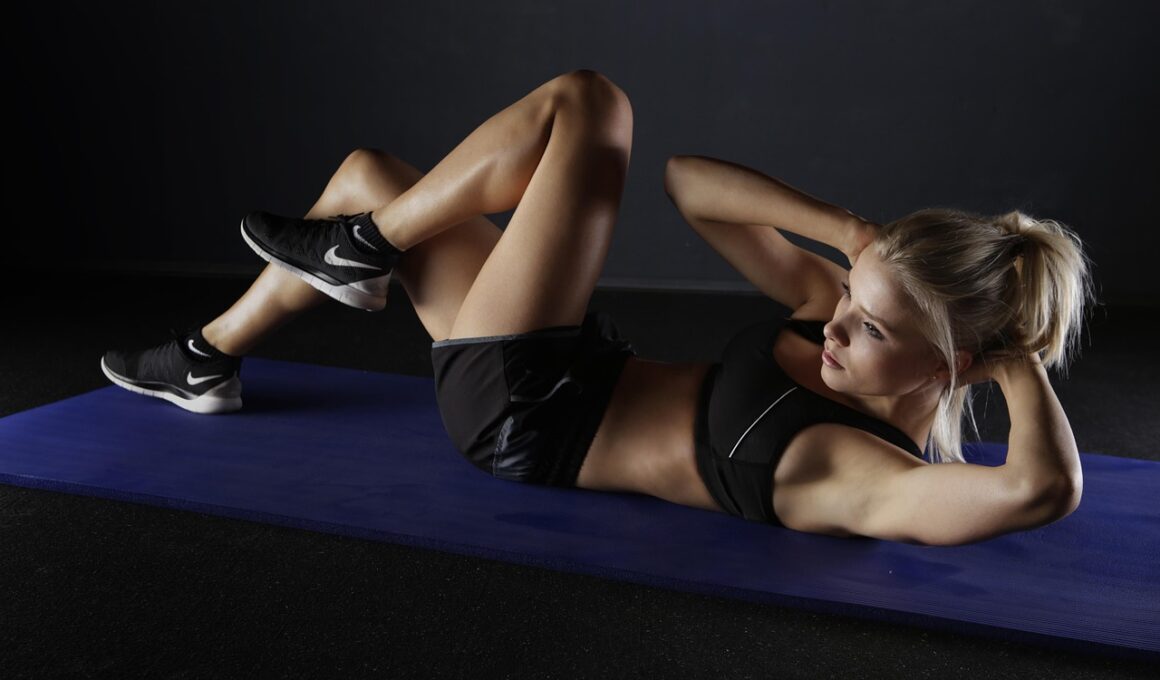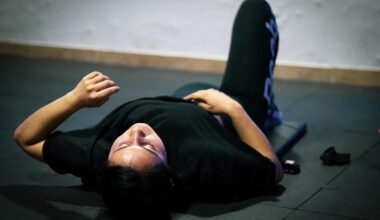Why Neglecting Glute Activation Can Limit Your Athletic Potential
The glutes play a vital role in athletic performance, but many athletes overlook their importance. When glute activation is neglected, it can lead to various performance issues. The glute muscles are essential for stabilizing the hips, which impacts the entire lower body mechanics. From sprinting to jumping, the glutes contribute significantly to explosive movements. Without proper activation, athletes might find themselves struggling to achieve peak performance in their sport. Additionally, weak glutes can contribute to improper running form, making athletes more prone to injuries. Eccentric movements, which require a strong glute engagement, become compromised when activation is lacking. Neglecting glute activation can hinder an athlete’s ability to produce power and speed. This is especially significant for athletes in high-impact sports where quick pivots and acceleration are common. To maximize athletic potential, integrating glute activation strategies into training regimens is crucial. This includes incorporating specific exercises such as hip bridges or squats that focus on engaging these important muscle groups. By consciously including glute activation, athletes can enhance their performance and reduce injury risks.
The Importance of Strong Glutes
Understanding the significance of strong glute muscles is foundational for an athlete. The glutes are composed of three muscles: the gluteus maximus, gluteus medius, and gluteus minimus. Together, they ensure proper hip function and movement. When these muscles work effectively, they improve posture, enhance strength, and aid in stability. Strong glutes are crucial for maintaining balance during dynamic movements, such as jumps or lateral sprints. Moreover, glute strength plays a pivotal role in preventing lower back pain. Many athletes suffer from this common issue due to underactive glute muscles. Weakness in the glutes can lead to overcompensation from other muscle groups, resulting in additional stress and potential injuries. It’s essential to implement bodyweight exercises targeting these muscles regularly. Examples include single-leg deadlifts and kettlebell swings, which activate and strengthen the glute area. For athletes, the ability to generate power and speed directly correlates with how well they can activate and utilize their glutes. As such, recognizing and addressing the importance of strong glutes is paramount for any athlete looking to elevate their performance in their respective sport.
Engaging in targeted glute activation exercises can significantly improve performance outcomes. A common misconception is that merely performing squats or lunges effectively activates the glutes. However, proper mind-muscle connection is essential to ensure effective engagement during these exercises. Athletes should focus on feeling the glute muscles contracting throughout the movement, rather than just completing the repetitions. Specific drills designed for glute activation are invaluable. For example, clamshells and lateral band walks are excellent for isolating the gluteus medius, a often neglected area. These exercises strengthen critical stabilizing muscles, promoting balance and coordination. Furthermore, utilizing resistance bands can enhance the effectiveness of glute activation practices. Bands create additional tension, requiring the glutes to work harder. Incorporating a variety of bodyweight exercises that emphasize glute control will promote muscle memory, further solidifying this strength. As these muscles become more adept, athletes often notice improved performance in sprinting, jumping, or even agility drills. The goal should be to consistently develop and refine glute activation techniques throughout training regimens, yielding long-term benefits that reach beyond initial gains to establish a solid athletic foundation.
Common Mistakes in Glute Training
Many athletes fall into common pitfalls when attempting to activate their glutes. One major mistake is relying solely on heavy weights without focusing on technique. It is crucial to prioritize correct form over the amount of weight used; improper mechanics can hinder glute activation. Another frequent error is neglecting to warm up properly. A dynamic warm-up featuring movements that engage the glutes prepares the body for more strenuous activity. Failure to warm up can lead to activating compensatory muscles, resulting in less effective glute training. Additionally, some athletes rush through exercises, missing opportunities for muscle engagement; slower, controlled movements often yield better results. Another common issue is performing exercises devoid of intentionality—athletes frequently fail to concentrate on the glutes during movements like squats or lunges. Ensuring consistent emphasis on these muscles during each rep will lead to more successful activation. Lastly, it is essential to allow adequate recovery time between sessions focused on glute activation. Overtraining can lead to fatigue and reduce overall performance. By avoiding these common mistakes, athletes can maximize the benefits of their glute activation efforts and enhance their overall athletic potential.
To integrate effective glute activation into a training regimen, a structured approach is necessary. First, athletes should dedicate time to specifically target glute muscles in every workout. This can involve incorporating warm-up routines that include exercises like donkey kicks and hip thrusts. Following the warm-up, it’s beneficial to include glute activation exercises at the beginning of strength training sessions. This ensures that the glutes are engaged before moving on to more complex movements. Additionally, scheduling specific glute-focused workouts a couple of times a week can further enhance muscle strength and activation. As athletes progress, gradually increasing the resistance used in these exercises will ensure continued growth. Consistency is vital when it comes to achieving desired results. It’s essential to monitor progress and make adjustments based on individual performance or feedback. Including mobility work will also benefit performance by increasing flexibility in the hips, allowing for better movement patterns. Creating a comprehensive training plan that involves varied exercises targeting the glutes will provide athletes with numerous benefits. Ultimately, consistent and focused effort will significantly enhance overall athletic performance.
Long-Term Benefits of Glute Activation
The long-term benefits of proper glute activation enhance not only performance but general physical health. Athletes who prioritize glute training observe improvements in their performance metrics and efficiency in movement. Over time, strong glutes contribute to overall lower body strength, allowing athletes to push harder in their sport without risking injury. Furthermore, activated glutes improve functional movement patterns, leading to enhanced daily activities and overall lifestyle quality. Increased glute strength can significantly reduce the incidence of lower back pain, a common issue among active individuals. With a strong foundation, athletes can sustain their physical efforts over more extended periods. It is also crucial to recognize the mental aspect—athletes positioned to excel due to effective glute activation often experience increased confidence in movement. Such psychological benefits cannot be overlooked. Moreover, incorporating glute activation strategies can boost metabolic function by enabling better performance and calorie expenditure during athletic endeavors. Realizing these extensive benefits encourages athletes to remain committed to their training. A focus on glute strength leads to improved training outcomes, injury prevention, and an overall enhanced athletic experience.
In conclusion, the role of glute activation in athletic training cannot be understated. Weak and unactivated glutes can severely limit one’s athletic potential, regardless of the sport involved. Athletes must recognize the necessity of tailored glute training to optimize their performance. Proper glute activation is fundamental not only for enhancing speed and power but also for improving movement efficiency and stability. With the right strategies to activate these muscles effectively, athletes reap the rewards in both performance and health outcomes. This involves incorporating targeted exercises, focusing on form, and allowing adequate recovery. Regular evaluation of progress ensures that strategies remain effective and relevant. By committing to a well-structured approach to glute training, athletes set themselves up for success. Therefore, integrating glute activation techniques becomes essential for those serious about maximizing their athletic potential. Ultimately, understanding and implementing strong glute activation practices can pave the way for improved performance, reduced injury rates, and a more fulfilling athletic journey that transcends mere participation.


